
 For my lovely father, Michael, who would eat soup every day if he could!
For my lovely father, Michael, who would eat soup every day if he could!
An Hachette UK Company www.hachette.co.uk First published in Great Britain in 2009 by Hamlyn, a division of Octopus Publishing Group Ltd Endeavour House, 189 Shaftesbury Avenue, London, WC2H 8JY www.octopusbooks.co.uk This eBook first published in 2010 by Octopus Publishing Group Ltd. Copyright Octopus Publishing Group Ltd 2009 Some of the recipes in this book have previously appeared in other books published by Hamlyn. All rights reserved. No part of this work may be reproduced or utilised in any form or by any means, electronic or mechanical, including photocopying, recording or by any information storage and retrieval system, without the prior written permission of the publisher. ISBN: 9780600623007 10 9 8 7 6 5 4 3 This eBook produced by Textech Both metric and imperial measurements have been given in all recipes. Use one set of measurements only, not a mixture of both.
Standard level spoon measurements are used in all recipes 1 tablespoon = one 15 ml spoon 1 teaspoon = one 5 ml spoon Ovens should be preheated to the specified temperature if using a fan assisted oven, follow the manufacturers instructions for adjusting the time and the temperature. Fresh herbs should be used unless otherwise stated. Medium eggs should be used unless otherwise stated. The Department of Health advises that eggs should not be consumed raw. This book contains some dishes made with raw and lightly cooked eggs. It is prudent for vulnerable people such as pregnant and nursing mothers, invalids, the elderly, babies and young children to avoid uncooked or lightly cooked dishes made with eggs.
Once prepared, these dishes should be kept refrigerated and used promptly. This book also includes dishes made with nuts and nut derivatives. It is advisable for those with known allergic reactions to nuts and nut derivatives and those who may be potentially vulnerable to these allergies, such as pregnant and nursing mothers, invalids, the elderly, babies and children to avoid dishes made with nuts and nut oils. It is also prudent to check the labels of pre-prepared ingredients for the possible inclusion of nut derivatives.

DISCOVER MORE GREAT
EBOOKS FROM THE
HAMLYN ALL COLOUR
COOKBOOK SERIES
Contents


introduction
As we become ever more conscious of the benefits of eating freshly made healthy food, and the financial and environmental consequences of the huge amounts of food that we waste, there could not be a better time to return to making soups just as our mothers and grandmothers did. A homemade soup not only tastes great, but also makes a few ingredients seem like a whole lot more.
They can be made at a fraction of the price of a carton of chilled soup from the supermarket and from a huge variety of ingredients. And they are surprisingly quick and easy to make. Once everything is in the saucepan they can be left to simmer while you get on with something else, requiring just 10 minutes or so at the end to finish off. In the following pages you will find soups to appeal to all tastes, occasions and seasons, from speedy soups that can be put together quickly after a busy day at work, to slow-cooked, hearty winter warmers, perfect for a Saturday lunch. There are elegant soups with dainty garnishes to impress dinner guests and refreshing chilled soups for the hot days of summer. The range of recipes and ingredients is vast and sometimes surprising: there are traditional meat and vegetable broths; oriental hot and sour soups; creamy smooth vegetable soups; chunky fish chowders; classics such as French onion soup; and recipes gathered from world cuisines, such as comforting chicken soup with lockshen, Indian-inspired mulligatawny and the vibrantly coloured Russian borshch.
Soups are the perfect comfort food: healthy, packed with vegetables and, depending on the soup you choose, usually low in fat. Tucking into a bowl of steaming hot soup on a cold, dull day is like turning on the central heating from the inside and guarantees to banish the winter blues. types of soup Broths These chunky, clear soups are really a complete meal in a bowl and can be thickened with rice, potatoes or pulses and mixed with lots of diced or shredded vegetables. They can be made even more substantial with the addition of tiny dumplings or pasta towards the end of cooking. Chowders These chunky soups originated in America and contain lightly fried onions and diced potatoes simmered gently with smoked or white fish, or a mixture of flat fish and shellfish in fish stock, then finished with milk or milk and cream. Bisques These rich soups are always made with fish and pured at the end of cooking, then generally mixed with cream or a mix of milk and cream.  Velouts These smooth soups are thickened with a mixture of egg yolks and cream to enrich the soup at the end of the cooking time.
Velouts These smooth soups are thickened with a mixture of egg yolks and cream to enrich the soup at the end of the cooking time.  Velouts These smooth soups are thickened with a mixture of egg yolks and cream to enrich the soup at the end of the cooking time.
Velouts These smooth soups are thickened with a mixture of egg yolks and cream to enrich the soup at the end of the cooking time.
To prevent the eggs from curdling, a ladleful of hot soup is mixed with the eggs and cream before adding to the main pot of soup. It is crucial that these soups are then heated gently and not boiled, just as you would when making a sweet custard, stirring continuously, so that the eggs thicken the soup rather than scramble. Potages A French term used to describe unstrained soups either poured over bread or topped with a bread crote. They can also contain rice or pasta. Consomms Ultra clear soups that are rather out of vogue now. homemade stock The best soups are those made with homemade stocks. homemade stock The best soups are those made with homemade stocks.
Traditionally this was made from the bones of the Sunday roast and flavoured with a few vegetable trimmings and herbs, as a way of making use of every part of a joint and using those scraps of leftover meat to make a hearty and filling meal. In todays age of recycling, it still makes excellent sense to use that scrappy-looking chicken carcass as the base for a delicious lunch or supper. And dont chuck out those refrigerator and vegetable-basket oddments, either: that slightly wrinkled carrot; those last few slightly bendy celery sticks; the stalks from that bunch of parsley or coriander can all be put into the stock. Add the odd bay leaf from the garden or the green leek or spring onion tops that are rather strong tasting and a sprinkling of peppercorns for extra flavour. The more you add the better it will be. The secret is to add all the ingredients and then to bring the stock just to the boil, reduce the heat to a very gentle simmer so that the water barely shudders, then cook with the lid half on, half off the pan for 2 hours, or longer if you have the time.


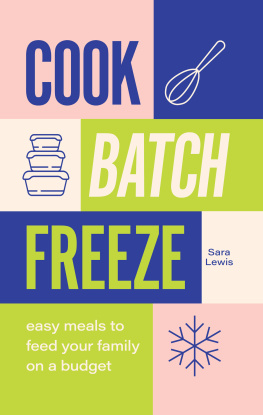
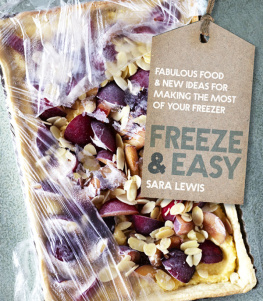
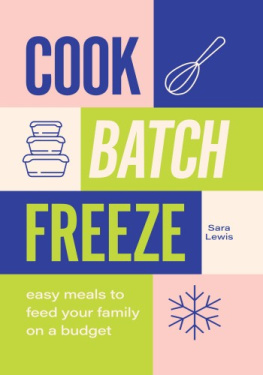

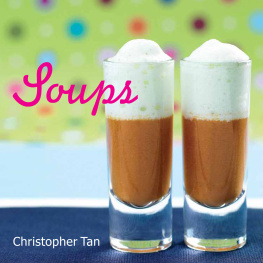

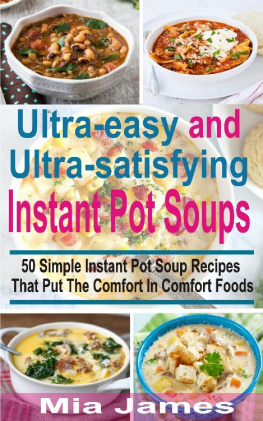
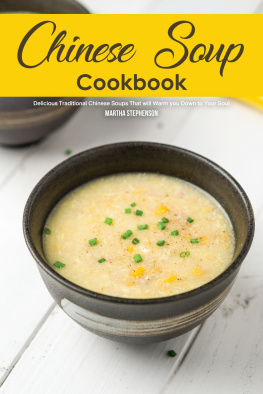
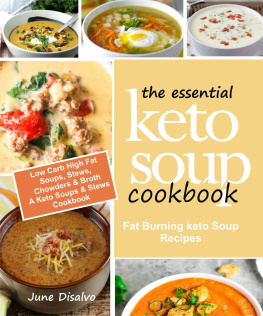
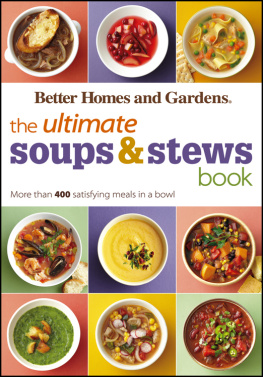
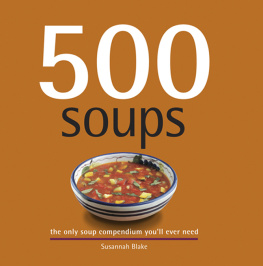

 For my lovely father, Michael, who would eat soup every day if he could!
For my lovely father, Michael, who would eat soup every day if he could! DISCOVER MORE GREAT
DISCOVER MORE GREAT

 Velouts These smooth soups are thickened with a mixture of egg yolks and cream to enrich the soup at the end of the cooking time.
Velouts These smooth soups are thickened with a mixture of egg yolks and cream to enrich the soup at the end of the cooking time.